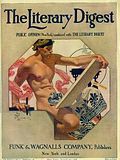 |
|
Trash Takes
Museums by Storm
Meika
Jensen
Sustainability
haunts every classroom in this country. Everyone, from those in accredited
masters degree programs to kindergarten students, are discussing the
issue and making changes both lifestyle and policy changes. The art community
is no different. Charged with showing the world a picture of itself,
capturing the very essence of life, in a day and age plagued by waste and
plastic it is no wonder that artists are turning to trash for inspiration.
A shiny
chandelier is constructed of worn out kitchen pipes. Children inspect
sculptures of mythological horses crafted from plastic bottles. Disco balls
made entirely of metal cans and shreds of paper towels. All of these bits
and scraps of trash and rubbish represent faces of a new movement that is
taking place in at the forefront of the art world. The movement originates from
deep inside the plastic
arts community and is all about taking regular recyclable materials,
as well as those that are reusable not but exactly recyclable, and turning them
into functional everyday reproducible objects.
Stepping away from the idea that art should be made for art’s sake,
these artists are spreading a greater global message - the ability to turn
weaknesses into strengths by changing the aesthetics of ugly. The current
driving idea in eco-art is that of transformation of trash
into something functional as well as visually stunning.
Using trash in the material for art was a launch pad for the new
artists. Today, people are not as shocked at this trend as they were at the
beginning; artists have succeeded in incorporating repurposed materials into
the acceptable realm of materials and concepts. Whether they are making a house
out of bottles or calling a urinal a fountain, yesterday’s waste is tomorrow
masters degree program fodder.
More and more artists are preoccupied by the ecological impact of
waste and the significance of a throw away culture. Artistic manifestos seem to
make their way into the woods as well; since Thoreau wrote Walden and Native
art broke into mainstream museums, artists have kept it on their radar.
The answer of
the artistic community to the new wave of trash-art is a rather warm one.
There are some traditional painters who cannot accept that a tree made of
plastic has the same artistic value as a tree painted by Rembrandt, Degas,
Monet or Mondrian. However, most artists themselves recognize the fact that
today’s over-consumption model is not viable and needs a major redesign,
continuing the tradition of portraiture and consumption wouldn’t be breaking
any norms.
The future will probably see the most compelling pieces exposed
somewhere in a museum buried in a landfill. Projects of this kind are already
in place in San Diego, according to the University of
California’s Institute of Research in the Arts. Other projects will
probably be formatted as creative workshops and short-term expositions moving
from one part of the country to another. The public seems to be the winner, as
the new generation of artists who believe in recycling can serve as a moral
model to the even younger generations who are sure to follow.
However, if art ever repeats itself, it is only in the sense that
norms will be broken. Once trash art is ubiquitous, it will go the way of
marble sculptures.
|
“ Flowers and Plants ”
-
ishikorokoroishi:
“ Flowers and Plants ”
Photo by Ishikoro. Japan.
Love & Peace!
10 hours ago















.jpg)
.jpg)





.jpg)


